Megalithic Europe
Barrows, Dolmens, and Standing Stones
One of the most striking things about prehistory is the sheer length of time involved. It’s routine to think in terms of millennia. A single lifetime is barely discernible. Archaeological cultures appear, last for hundreds or thousands of years, and then disappear, lost in the mists of time. Only rarely can we catch glimpses of these people’s lives: often through their deaths and subsequent burials, occasionally through the places they lived. We usually have to dig down through feet of soil and rubble to catch those glimpses.
But there are exceptions. Sometimes, people shape the landscape in profound ways, leaving behind visible monuments of their presence that last for thousands of years. Walls, temples, ruined cities, and pyramids all stand witness to the people who built them, striking reminders of times gone by.
The people of Neolithic Europe left behind some of the most mind-bending of these monuments, enormous constructions of earth and stone everywhere from Iberia to Ireland to Sweden. Stonehenge is the most famous of them (though most of what’s visible today actually dates later, to the Bronze Age), but it’s one of many; Neolithic people erected thousands of standing stones and built countless earthen barrows and stone tombs in the millennia following 4500 BC. For thousands of years, the farmers and herders of western Europe hauled enormous stones miles from their quarries and dug out thousands of tons of soil to build these things. They did so without the benefit of metal tools or even, for much of that time, the wheel.
Consider the hours of labor, carried out by dozens of people at a time, necessary to drag the stones of this dolmen - a tomb for one or more people made up of vertical stones with horizontal slabs laid on top of them - into place:
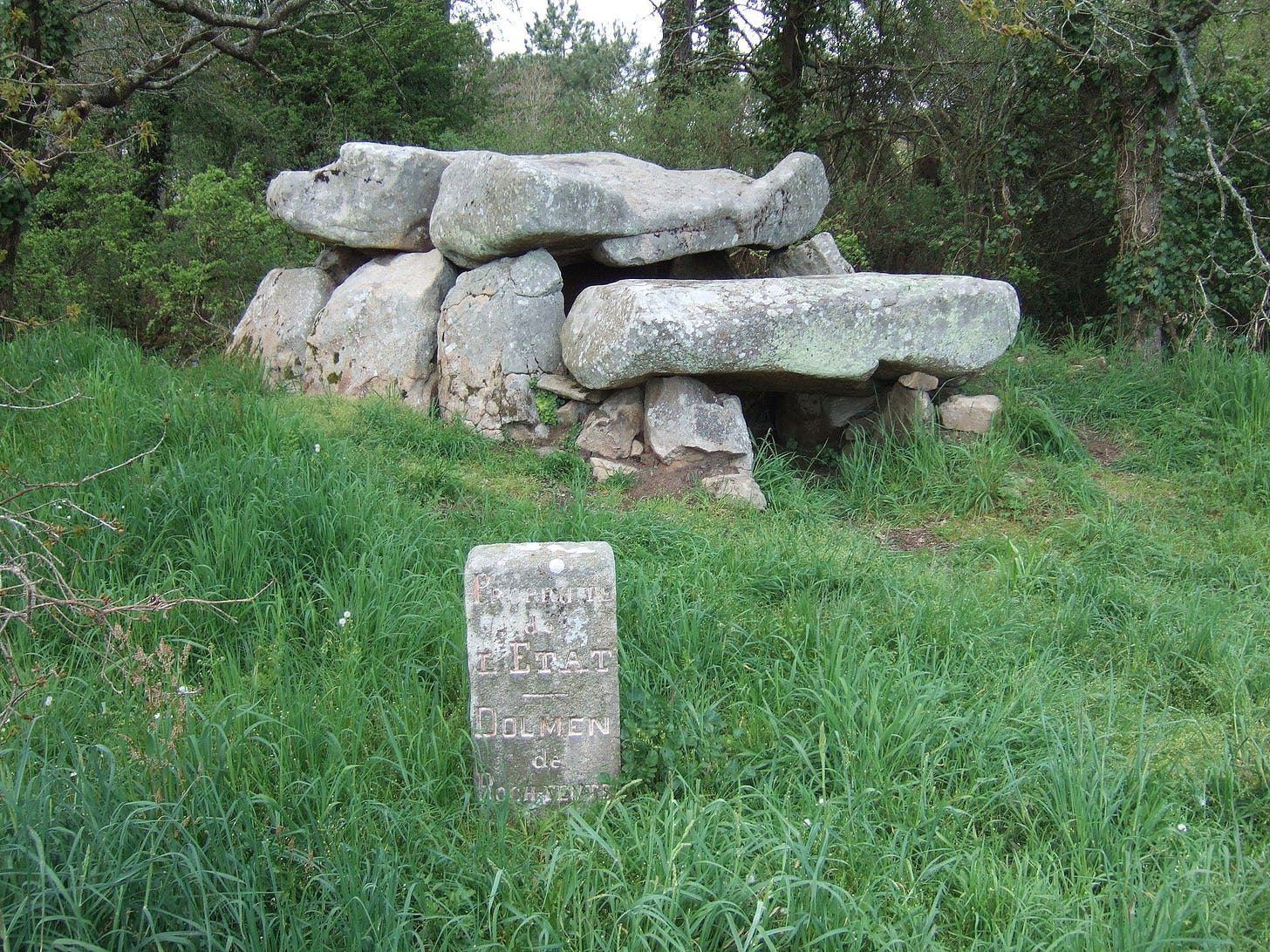
This dolmen (located at Carnac, in Brittany) isn’t especially large for its specific type of monument, of which there are hundreds, nor are dolmens the most complex or labor-intensive monument from the Neolithic. There were barrows, large earthen mounds with burials at the center: Some of them had timber burial chambers, while others had dolmen-like constructions at their heart which were then covered with the mound. Still others had rows of standing stones to mark the edges of the mounds. Here’s a long barrow, called Wayland’s Smithy, from Oxfordshire in England:
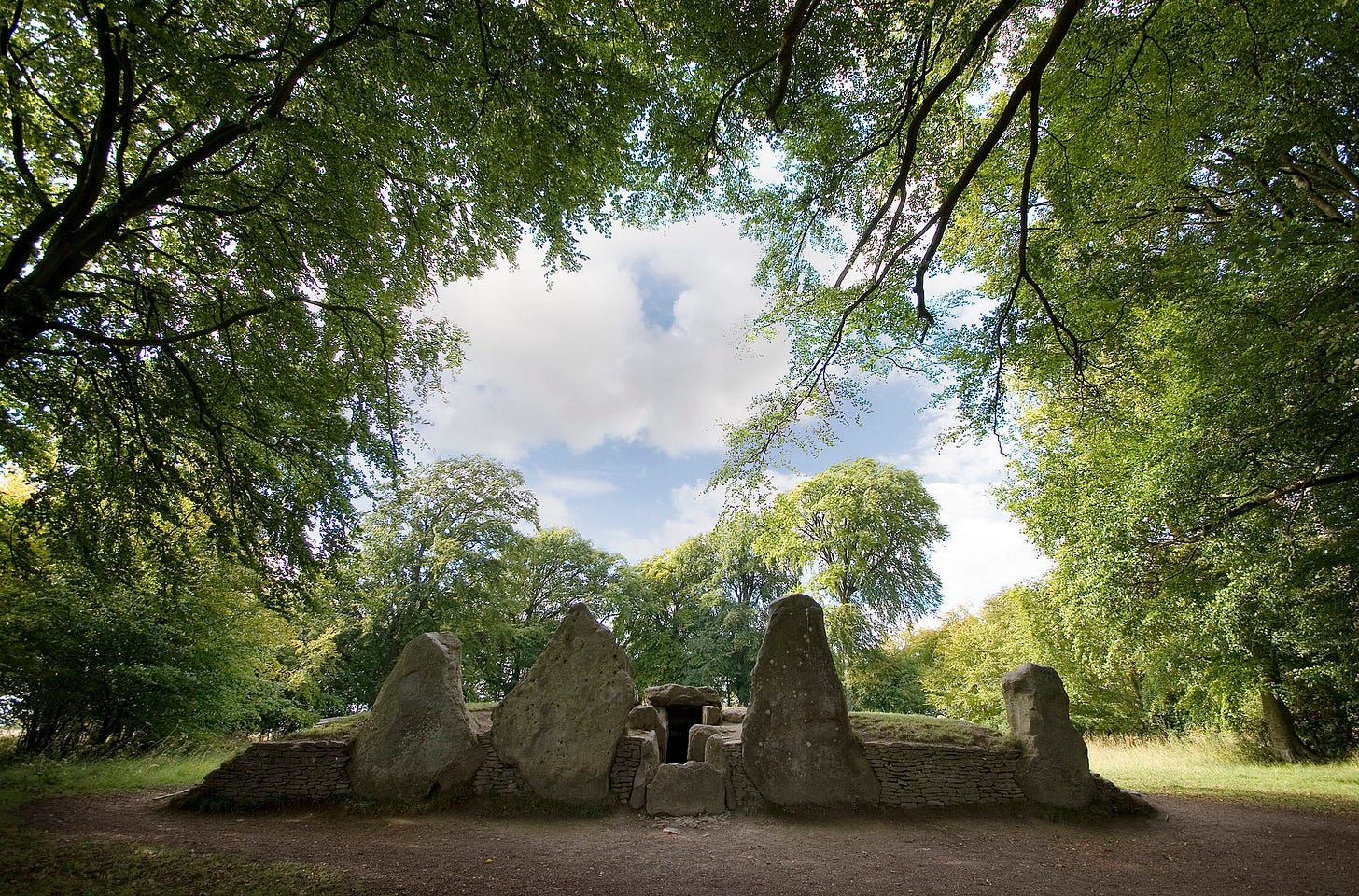
And here’s the Grønsalen Barrow on the Danish island of Møn:
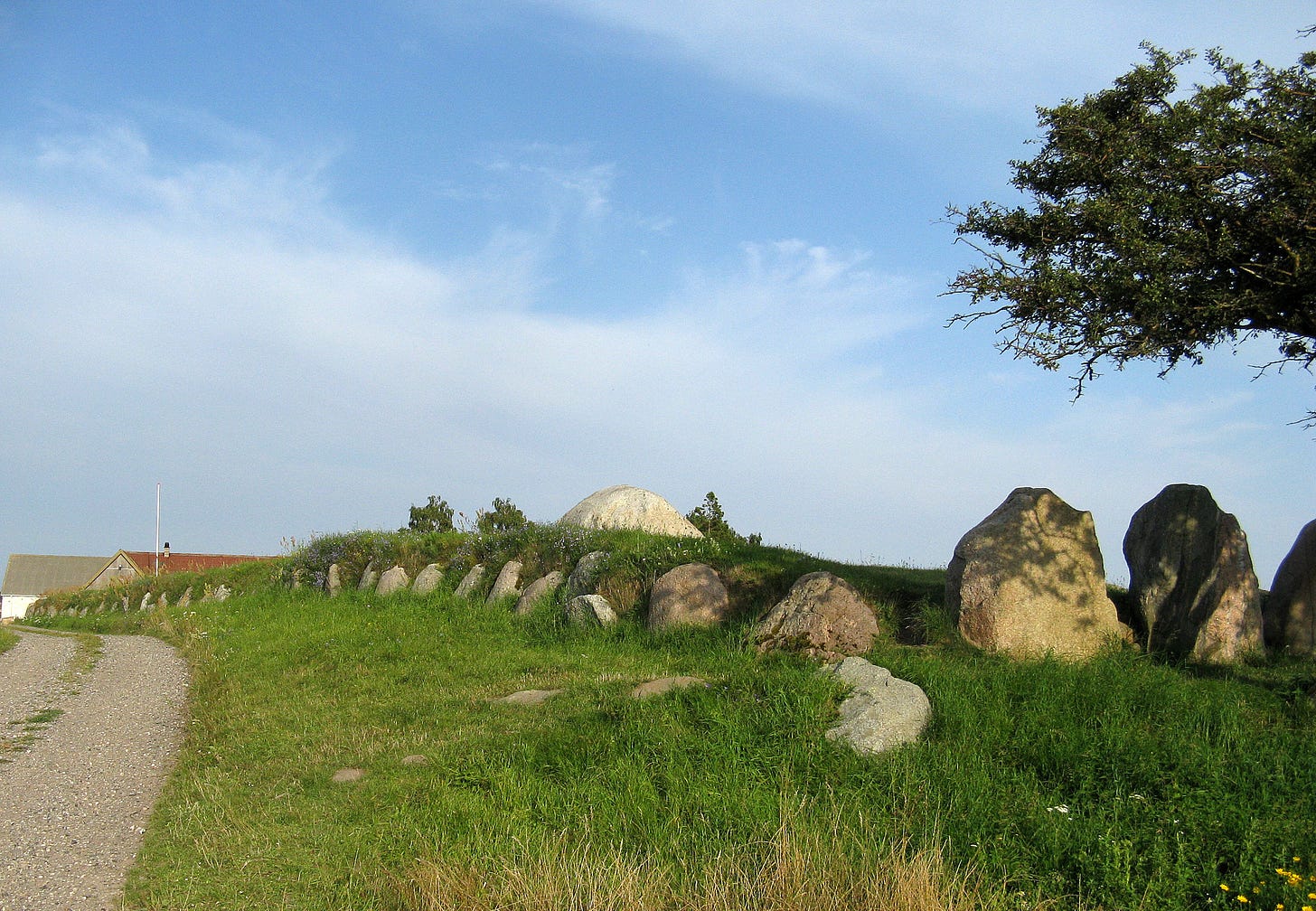
It would’ve taken dozens or hundreds of people thousands of hours to build these monuments. Splitting stones isn’t simple, particularly without metal tools. Constructing a tomb out of slabs, one that’s stable enough to last for millennia, requires substantial technical skill and expertise. Anybody who was spending their time working on these monuments wasn’t herding cattle or hoeing fields of grain. The groups and societies that built them invested their resources and labor in the projects. They must have had good reasons for doing so.
What were those reasons? Unfortunately, the people of Neolithic Europe have left no writing that might tell us about their inner lives or reveal something of their worldview. People were usually buried in these monuments, which makes them tombs for individuals or groups; this is presumably evidence of a hierarchical social system, in which some people or families had power over others. The nature of that power, though, is unclear. It might have been purely political, a matter of the exercise of raw force and domination, but that seems less likely than some kind of combined political-religious authority. Maybe dynasties of priest-kings ruled parts of Neolithic Europe, and their followers built - or were forced to build - these tombs to honor them.
One fascinating recent analysis, led by the Irish geneticist Lara Cassidy, lends support to this idea. When she and her team analyzed the DNA from the people buried at the spectacular Irish passage tomb of Newgrange and those interred in other Irish megalithic monuments, they discovered that these people were related to one another. Dolmens, barrows, and passage tombs were all built to house the remains of members of one extended kin-group over hundreds of years, presumably a Neolithic dynasty of some kind. Moreover, the individual buried at Newgrange - a member of this dynasty - was the product of a first-degree incestuous union (father and daughter or brother and sister), precisely what you’d expect to see in a society where religious and political authority were intertwined.
Newgrange is really incredible. Here’s the exterior:
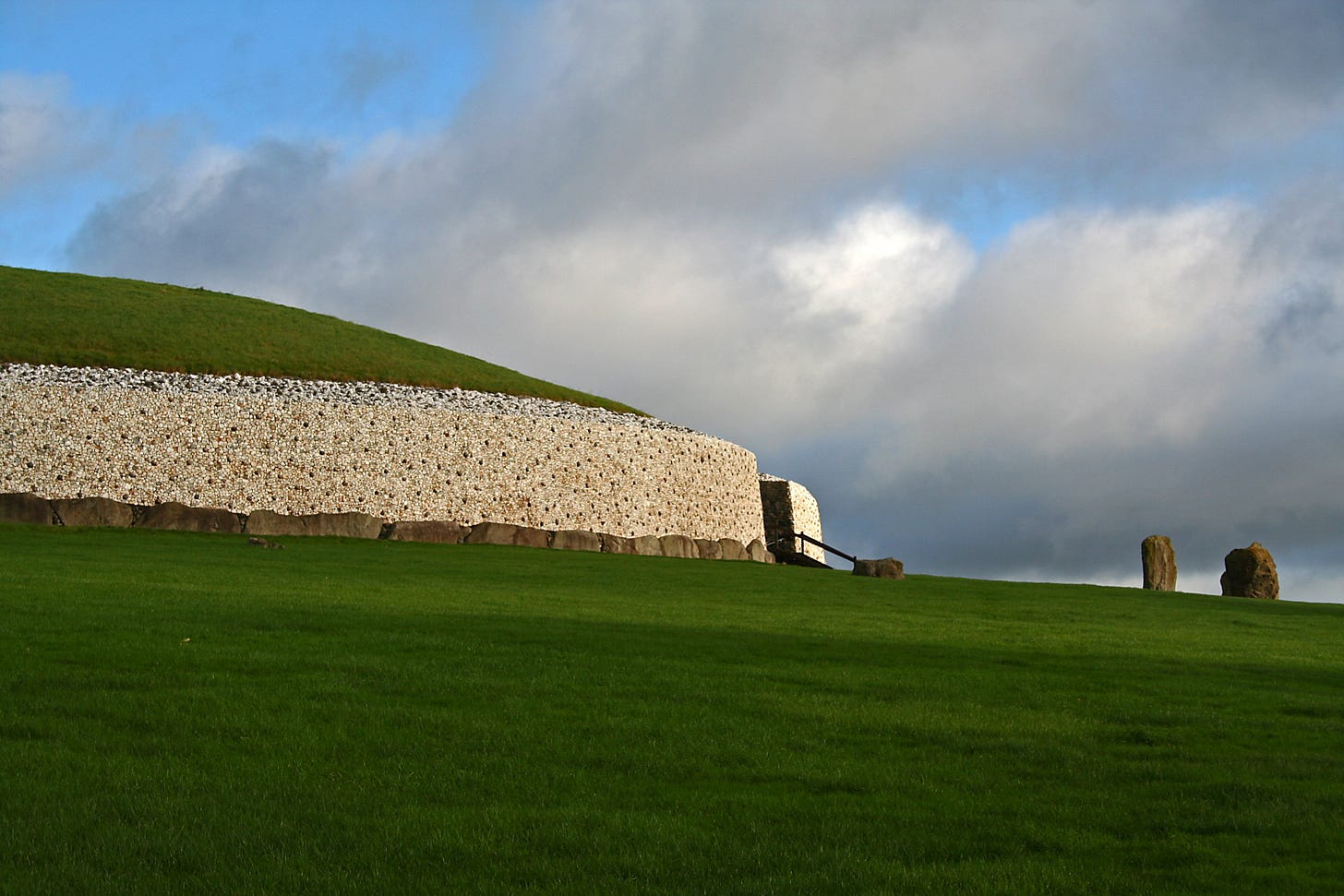
And the entrance:
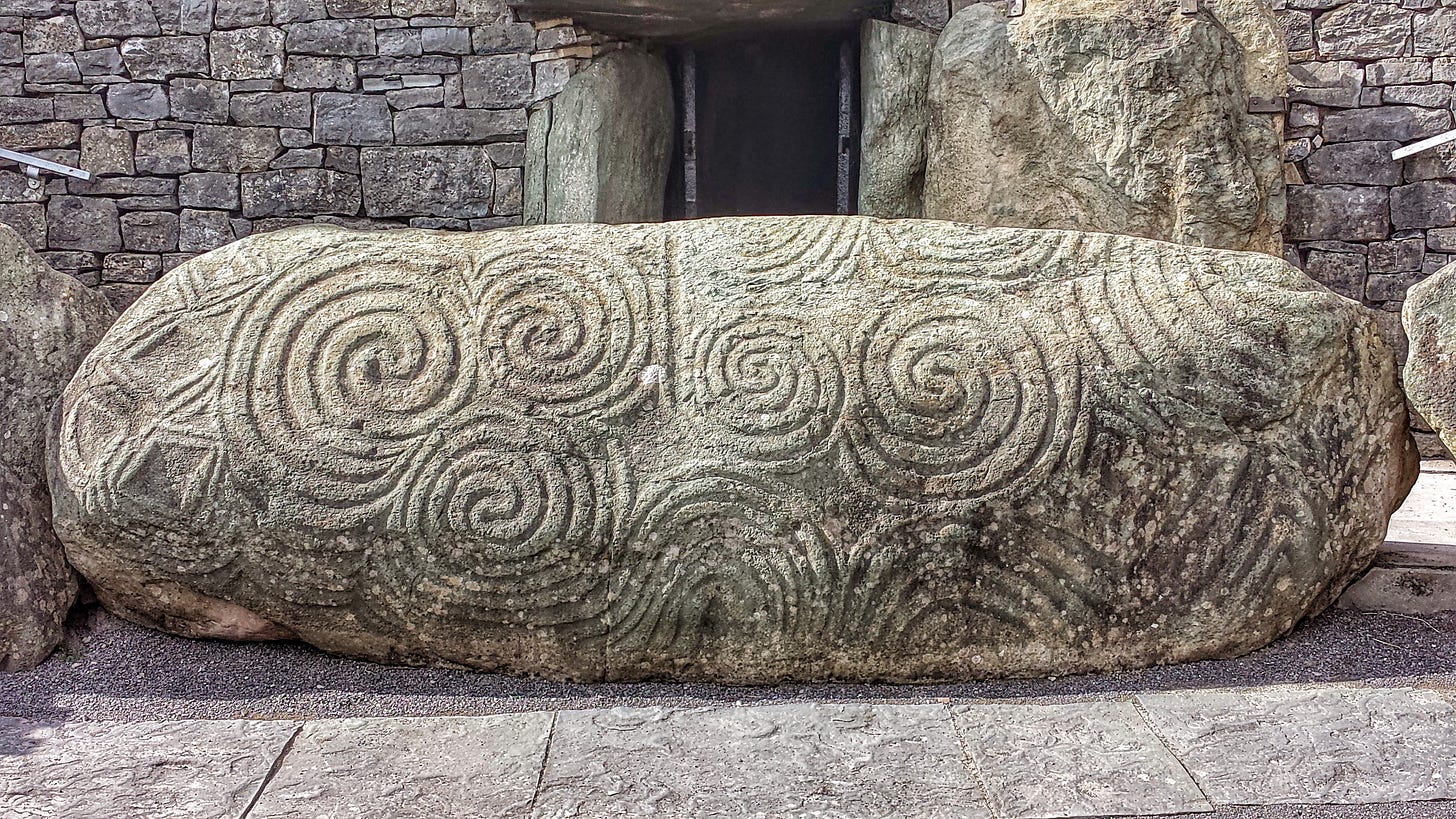
And the interior, which leads toward the burial chamber that housed the remains of the important person born of an incestuous union:
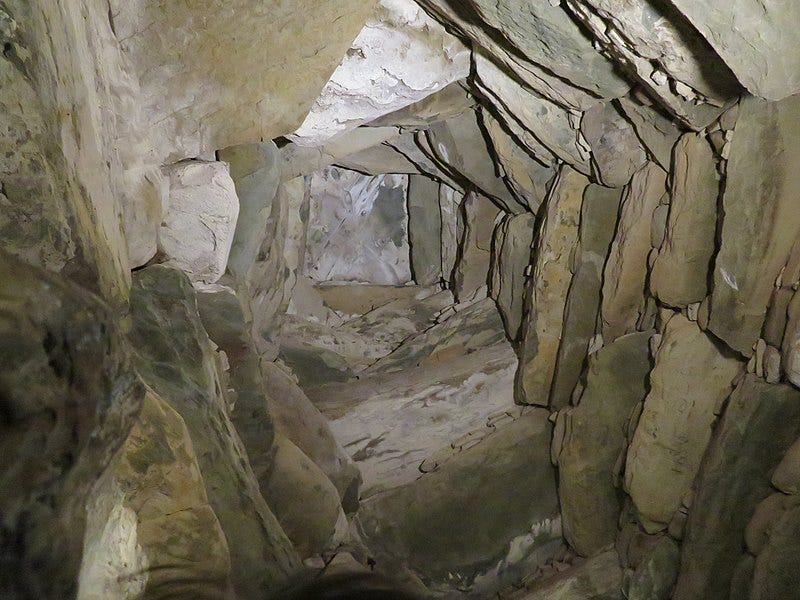
At least in the case of Ireland, megalithic monuments seem to have been the product of some kind of dynastic commemoration. Perhaps these special people were intermediaries between the people and the gods or the supernatural; maybe they ruled with an iron fist, or perhaps their leadership was more charismatic, softer in nature. For now, it’s hard to say. But the monuments themselves are still around, and they’re among the most impressive and striking features of a world that’s been gone for more than 5,000 years.
If you’d like to know more about the megaliths and the society that built them, check out today’s episode of Tides of History, my podcast. And if you’ve enjoyed this, please subscribe and share:
Further reading:
Stephen Shennan, The First Farmers of Europe: An Evolutionary Perspective
Chris Fowler, Daniela Hoffman, and Jan Harding (eds.), The Oxford Handbook of Neolithic Europe
Alasdair Whittle, The Times of their Lives: Hunting History in the Archaeology of Neolithic Europe

In the podcast you mentioned a defensive barrow that was used temporarily and then rebuilt periodically. I wonder if it could represent some kind of "last resort" fortification for the local peoples? When things are going well they spread out and have no need to keep it up. When things turn for the worse, they know this is the place that can be defended, so they return and fortify it for an actual or potential last stand. Just spitballing, I realize that might be an overly complicated assessment, but the idea intrigued me when you mentioned it. Love the podcast and welcome to AZ.
Is there any evidence that shows that these people had any influence on any subsequent civilizations? What did later people make of these structures? Is there any written speculation on the part of any Germanic or Mediterranean people about them?